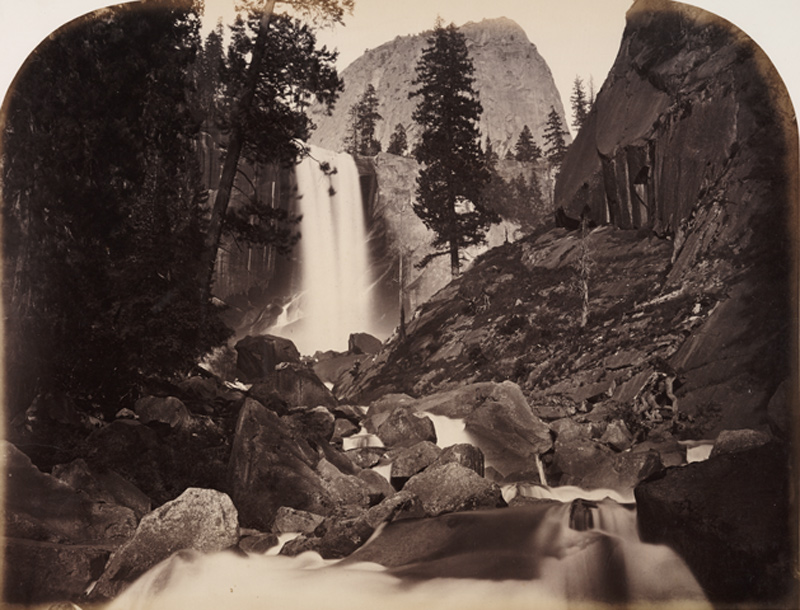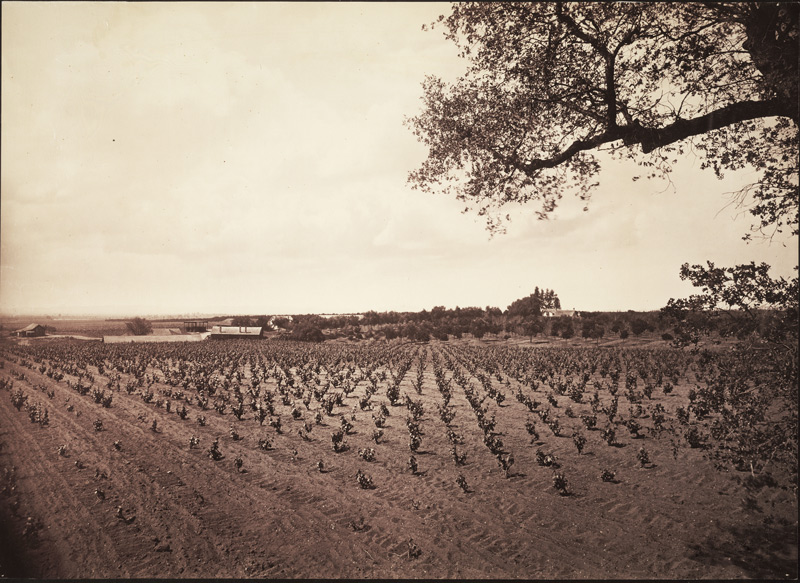The Huntington’s blog takes you behind the scenes for a scholarly view of the collections.
"California's First Major Artist"
Posted on Fri., Nov. 18, 2011 by
Photograph collectors get a glint in their eyes when you mention Carleton Watkins (1829-1916). Named "California's first major artist" by the Los Angeles Times' Christopher Knight, the 19th-century American photographer had an extraordinary sense of composition, produced expert, richly toned prints, and captured the beauty of the American West's natural landscape as well as its disfigurement at the will of industry. But few photography aficionados had heard of Watkins before the late 1970s, when a couple of key auctions brought to light an impressive group of works. That's when Watkins—who was actually imitated by the eternally famous Ansel Adams (1902–1984)—was established as, in the words of Weston Naef, "An 'artist's artist,' one of the most coveted of all the compliments a photographer could receive."
Naef, who is curator emeritus in the department of photographs at the J. Paul Getty Museum, is co-author with Christine Hult-Lewis of a new catalogue raisonné on Watkins. Carleton Watkins: The Complete Mammoth Photographs, out this month from Getty Publications, is receiving rave reviews. Library Journal says it is "a monumental achievement in the pictorial historiography of 19th-century America ... this will be an indispensable resource for students of photography and U.S. history."
And The Huntington played a significant role in this publication. Of the 1,273 images cataloged in the 608-page tome, more than 350 are from The Huntington's collections. And two of the essays (one on Watkins' little-known California missions project, the other on Southern California railroad and agriculture pictures) were contributed by Jennifer A. Watts, curator of photographs at The Huntington.
The Huntington owns more than a thousand Watkins photographs. The collection can be traced to his complex relationship with a powerful boyhood friend, Collis P. Huntington (Henry's uncle). Collis hired Watkins to document the Central and Southern Pacific Railroad corporations. At the center of The Huntington's holdings are four sumptuous albums of mammoth (18 x 22 in.) views bound in morocco leather that were a gift from Watkins to his benefactor, to whom he owed his very career.
Over the years, The Huntington continued to add to its Watkins holdings through gift and purchase, making it one of the great repositories of his work, along with the J. Paul Getty Museum, the Bancroft Library at University of California, Berkeley, and the Hispanic Society of America (founded by Henry Huntington's stepson, Archer).
Hardcover copies of the book are available at the Huntington Bookstore & More for $195.
Thea M. Page is art writer and special projects manager at The Huntington.

